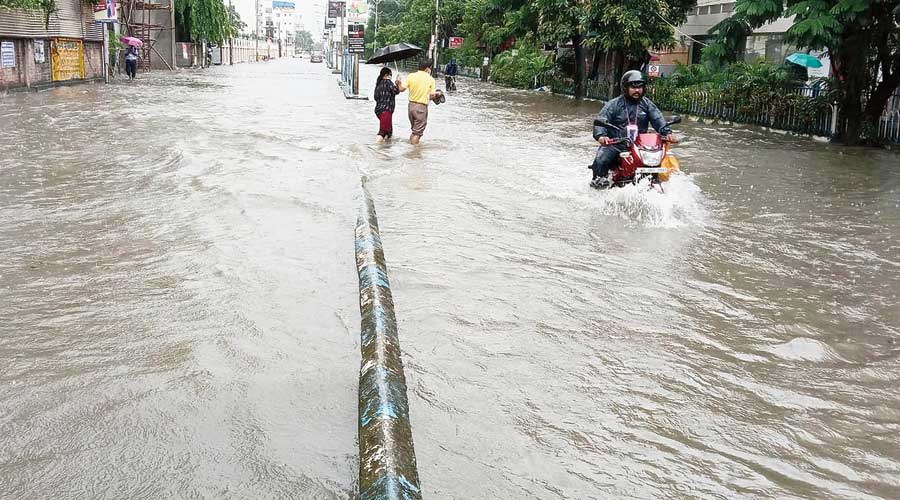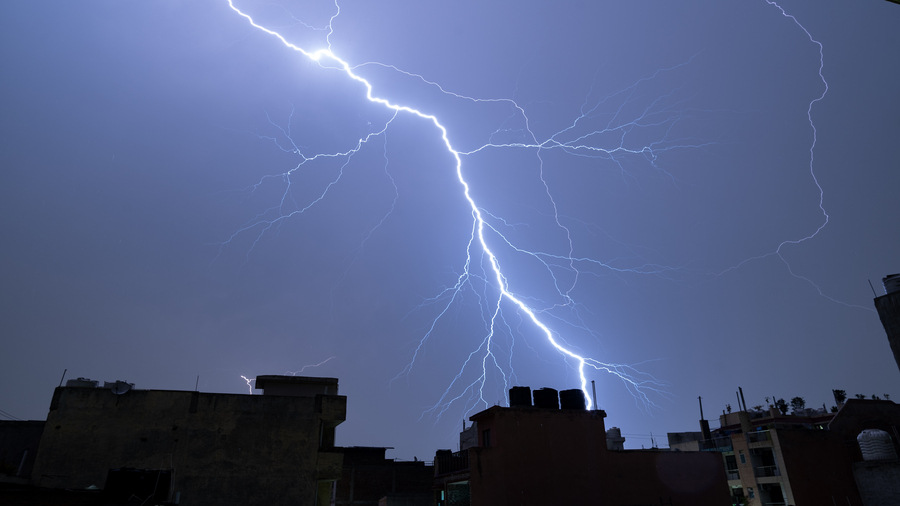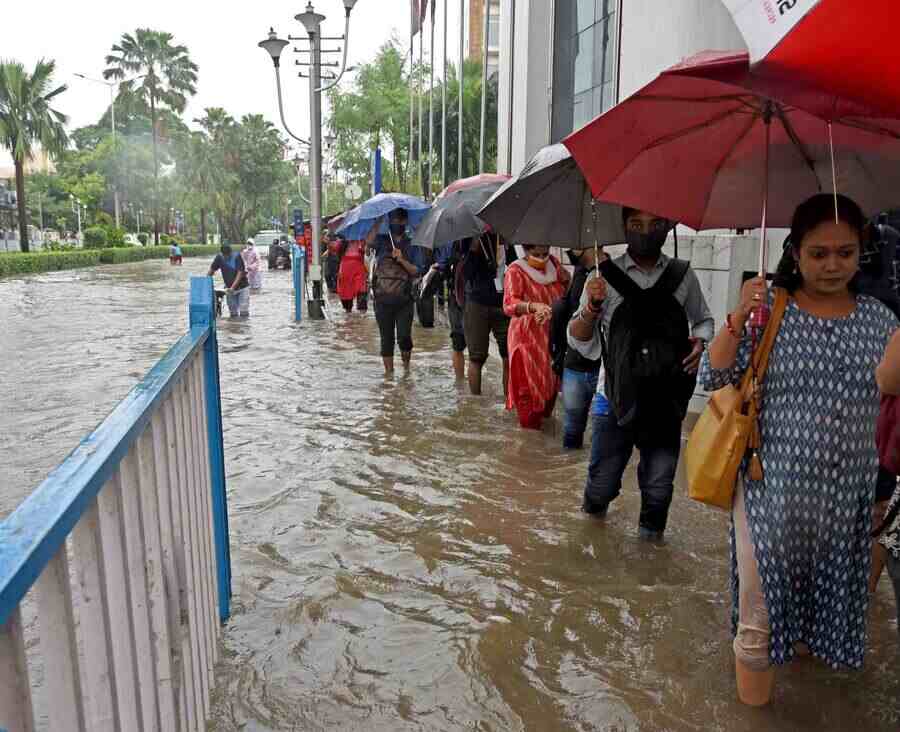
A road in Mukundapur resembles a river on Monday. Kolkata received around 150mm of rain between Sunday night and Monday morning. The downpour was the third heaviest in 24 hours in September since 2000, according to the Met archives. Pradip Sanyal
An almost unending spell of thunderclaps interspersed with growls and rumbles and accompanied by flashes of lightning jolted many Kolkatans out of their sleep early on Monday morning.
Bengal is prone to lightning, and has become more so in recent years. The state recorded the highest number of lightning strikes from cloud to ground per square kilometre in India last year, according to the 2020 South Asia Lightning Report.
Monday’s bolts were, however, scarier than usual. Almost every bolt seemed to strike at a touching distance.
Lightning is an electrical discharge triggered by an imbalance in the electrical charge between storm clouds and the ground, or between clouds. Lightning momentarily heats the air it passes through to temperatures hotter than the surface of the Sun. This causes the air to explode outward, triggering a flash that is followed by the sound of thunder.
Arun Chakraborty, professor at the Centre for Oceans, Rivers, Atmosphere and Land Sciences at the Indian Institute of Technology, Kharagpur, said that convective clouds at the lower levels of the atmosphere were behind the flashes of lightning.
During May or June, the heat in the atmosphere ensures that the convective clouds climb much higher than they do during the fag end of monsoon in late September.
“Once over an urban area, the clouds at the lower levels of the atmosphere often split into smaller shells because of obstruction from tall structures — buildings, spires and towers. After the division, the small shells often collide, triggering a discharge of electricity,” Chakraborty said.
“The discharge is directed towards the ground because the clouds are not at a very high altitude. On the contrary, the discharge from clouds at the upper levels often hit the clouds below them.”
He added: “Global warming contributes heavily to the rise in the number of lightning strikes by enhancing heat and moisture, the key ingredients for lightning. The ionised particles in the atmosphere, often released from factories, also lead to frequent lightning.”
A Met official said Monday’s bolts seemed so close because they were mostly cloud-to-ground strikes.
“During a storm, the moisture inside the clouds increases the electrical imbalance between the clouds and the ground. The clouds are negatively charged while objects on the ground and the Earth itself become positively charged. This creates an imbalance that nature seeks to neutralise by passing an electrical current between the two,” the official said.
“Cloud-to-ground bolts can cause fatalities. It was a good thing that the lightning happened during the early hours, when people were mostly indoors.”
On May 7 this year, 27 deaths from cloud-to-ground lightning strikes were reported across the state.
G.K. Das, director of the India Meteorological Department, said the frequent bolts on Monday morning resulted from the strong updraft and downdraft — rising and descending air currents.
“Both the updraft and downdraft were dominant. The clouds were highly charged and this led to the bolts,” he said.

